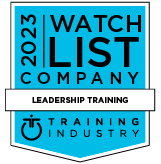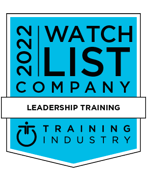How to Measure Team Alignment

Contents
How do you and your team feel as you take those first steps in approaching a challenge such as a new client or a big project? Do you feel a) collectively anxious, and like your role as leader is about to get more intensive?
Or do you feel b) calm, motivated and confident?
If your answer is ‘A’, it is high time to learn how to measure team alignment. Because when we feel ‘B’, it’s because we know we have that team alignment in place. Every person knows their role, how it fits in, their individual strengths and weaknesses, and is clearly focused on working towards a shared goal.
Team alignment is a crucial factor for organizational success. Engaged and aligned teams benefit from increased productivity, improved communication, higher employee engagement and retention, faster decision making, and increased agility to respond to external forces (Gallup). Leaders and employees must be on the same wavelength when it comes to creating sustainable business practices.
However, day-to-day stress, full plates and lots of different personalities and team dynamics under one roof can be a recipe for tension, disparity, and things slipping through cracks.
Understanding how to measure team alignment can be challenging. Many organizations struggle to determine how crystal clear their teams are on goals, expectations, why they’re doing what they’re doing, and how that team alignment contributes to the success and happiness of employees.
But success relies on unity, and learning how to create team alignment – and how to measure team alignment – is the job of every good leader.
How is Team Alignment Measured?
Goal Alignment
How well are your team's goals aligned with the organization's purpose and goals?
The bigger picture can easily be lost in day-to-day operations if it isn’t clarified. Some team members might be juggling hefty workloads with stretched bandwidth, or have conflicting or competing priorities, or misaligned objectives.
So, learn how to create team alignment by setting shared goals with your teams that provide direction. Then, individual goals for each person to help them reach those objectives one step at a time.
Communication
How well does your team communicate clearly with each other?
With so many people still working remotely in their own physical spaces, organization silos are more of a risk than ever before. Communication is the glue of your operations and is key in understanding how to measure team alignment.
How are objectives understood and communicated across teams? Always make time to help iron out any confusion over tasks or projects, and check to make sure that no one feels left in the dark.
Consider ways to embed team alignment into your organization’s culture, too. How can you promote collaboration over competition within teams? How can you encourage consistent, transparent communication around company and individual goals?
We’re all human and things will inevitably go off-track, but leading by example and being honest about roadblocks will encourage employees to do the same when they hit their own.
Role Clarity
How well does your team understand their roles and responsibilities?
Does every employee understand exactly how their contributions matter? Aligned teams don’t feel like just another cog in the machine – but rather, a crucial element of making amazing things happen. Having a clearer idea of how others are contributing will also help to promote empathy among aligned teams, too.
Trust
How well does your team trust each other?
Team cohesion requires every employee to feel like they belong. Building a psychologically safe workplace is a key factor in cultivating inclusive leadership and learning how to measure team alignment. It helps us to feel safe in sharing feelings and feedback with each other, resolving team conflict constructively, and asking for help (from fellow employees and leaders) if there’s a problem or if we feel overwhelmed.
“If everyone is moving forward together, then success takes care of itself.” – Henry Ford
Gathering Feedback on Your Team’s Collaboration
Do people find it challenging to hear and tell people how they’re performing when it comes to team collaboration? Are there instances of stonewalling? Defensiveness? Or people retreating into themselves and losing confidence in their work and communication?
Feedback is an essential tool for motivating and developing, and to assess team alignment. However, it needs to be delivered in the right way, to ensure it is feedback and not simply criticism.
Good feedback is a two-way process; it’s a continuous constructive commentary so everyone knows how they’re doing, and what is and isn’t working. How people (leaders and employees alike) receive that feedback directly impacts team alignment, individual development, and how willing people are to offer feedback in future.
The Feedback Shift helps leaders to understand how to measure team alignment through open and honest two-way communication, to create a culture of continuous improvement. It’s about using words to inspire, and learning to listen back, to assess team alignment and team collaboration, and ensure every team member feels valued and listened to. You can learn more about The Feedback Shift here.
Quantifying Team Alignment
77% of executives feel like they are a part of something important at their organization, whereas only 59% of employees feel the same (Gartner). Only 28% of executives and middle managers responsible for executing strategies could list their company’s strategic priorities—with this percentage decreasing the further down the reporting line you look (MIT Sloan Management Review).
If your sales numbers are declining, it could indicate a lack of team cohesion between your sales and marketing teams.
If your customer satisfaction ratings are low, it could imply a lack of team alignment between your customer service and product development teams.
If deadlines are often missed or moved, it could mean a lack of team collaboration between project management and IT and design departments.
If you experience high turnover in a particular team or department, people may be feeling lost in their roles, and a lack of team alignment in the bigger picture.
Observing Team Dynamics
Observing team dynamics is another way to assess team alignment. By observing team interactions, and how they communicate and work together, you can establish whether they're aligned in working towards a common goal.
To recap, some common indicators of good team dynamics include:
-
Trust and respect between team members
-
Open and honest communication
-
Shared commitment to team goals
-
Willingness to collaborate and share ideas
-
Supportive and positive team culture.
DX Learning’s The Alignment Shift merges cutting-edge science and immersive, experiential learning to remove gaps and blind spots, and teaches leaders how to create team alignment. Book your spot today to make team alignment a fruitful reality in your organization.
Insights

Subscribe to Our Monthly Newsletter!
For managers and talent professionals who truly believe in putting people first, the CARE to Win blog is your gateway to the latest insights on human-centric leadership. Join us as we champion the people first movement.
Need some time apart? Are we emailing you too often? Just give us your feedback, and we promise we’ll respond. We really do care. And if it’s still too much, just unsubscribe. It’s cool.



